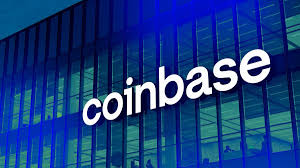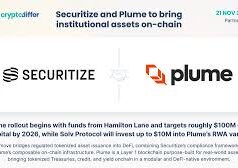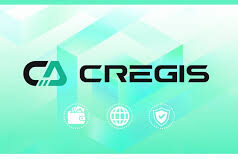The cryptocurrency world is no stranger to big numbers, but a recent JPMorgan report dropped a bombshell that’s turning heads: Coinbase’s partnership with Circle, the issuer of the USDC stablecoin, could be worth a staggering $55–$60 billion for Coinbase shareholders. Released on July 29, 2025, the report paints a picture of a financial powerhouse quietly building wealth through stablecoin economics, a sector that’s often overshadowed by flashier crypto assets like Bitcoin or Ethereum. Let’s dive into what this means, how it’s happening, and why it’s a big deal for Coinbase and the broader crypto ecosystem.
The Stablecoin Goldmine
At the heart of this story is USDC, a stablecoin pegged 1:1 to the U.S. dollar, co-founded by Circle and Coinbase through the Centre Consortium. Unlike volatile cryptocurrencies, USDC’s value stays steady, making it a go-to for trading, remittances, and decentralized finance (DeFi). According to JPMorgan, Coinbase’s deep ties to USDC are generating serious cash—$300 million in revenue from distribution payments in Q1 2025 alone, outpacing Circle’s own net revenue of $230 million. That’s right: Coinbase is making more from USDC than the company that runs it.
But it’s not just about direct earnings. Coinbase holds 8.5 million shares in Circle, valued at $1.6 billion, and manages $13 billion in USDC balances on its platform, raking in $125 million at 20–25% profit margins. Off-platform, Coinbase splits the Circle Reserve Fund income 50/50, pulling in $170 million last quarter at nearly 100% margins. These numbers show why JPMorgan is so bullish: USDC isn’t just a side hustle for Coinbase—it’s a high-margin, scalable revenue machine.
A Strategic Partnership Paying Dividends
Coinbase and Circle’s collaboration is a masterclass in synergy. Through the Centre Consortium, they’ve built USDC into the second-largest stablecoin, with a $63.78 billion market cap as of July 2025. For Coinbase, this partnership means more than just revenue—it’s about ecosystem dominance. By integrating USDC across its platform, Coinbase attracts users at near-zero cost, thanks to Circle-funded incentives. This fuels user growth and cements Coinbase’s role as a crypto infrastructure giant.
JPMorgan’s Naveen Mallela, Global Co-Head of Blockchain, put it bluntly: “We have always believed in having a token-based solution on public blockchains.” This mindset underscores why USDC is a linchpin for Coinbase. The stablecoin’s migration to public Layer 2 networks, like Coinbase’s Base blockchain, gives it a competitive edge over private blockchain initiatives, making it a favorite for institutional adoption.
Why This Partnership Stands Out
The $55–$60 billion valuation isn’t just a number—it’s a signal that the market may be sleeping on Coinbase’s USDC potential. Unlike traditional trading fees, which can be volatile, USDC offers Coinbase a steady revenue stream. The stablecoin’s role in payments, remittances, and DeFi means its growth is tied to the broader adoption of blockchain technology. As more institutions embrace digital finance, USDC’s utility—and Coinbase’s profits—could skyrocket.
What’s more, Coinbase’s partnership with Circle gives it a unique edge over competitors like Kraken or Binance. While others focus on trading or custody, Coinbase is building a broader ecosystem. Its 8.5 million shares in Circle align its interests with USDC’s success, and its management of the Circle Reserve Fund adds another layer of profitability. This multi-pronged approach makes Coinbase a standout in JPMorgan’s eyes.
The Institutional Seal of Approval
JPMorgan’s report isn’t just a pat on the back—it’s a sign that traditional finance is taking crypto seriously. When the world’s biggest bank says a crypto exchange’s stablecoin business is worth $60 billion, it’s a wake-up call for investors. The report highlights how USDC bridges traditional and decentralized finance, enabling everything from cross-border payments to DeFi lending. This aligns with JPMorgan’s own crypto moves, like its JPMD deposit token pilot on Coinbase’s Base blockchain, announced in June 2025.
The timing is no coincidence. Regulatory frameworks like Europe’s MiCA and the U.S.’s Genius Act are creating a safer environment for stablecoins, boosting institutional confidence. USDC’s transparency and compliance efforts make it a darling of regulators, unlike its rival Tether (USDT), which has faced scrutiny over reserve transparency. This regulatory clarity could supercharge USDC’s adoption, further padding Coinbase’s bottom line.
Risks and Roadblocks
Nothing this lucrative comes without challenges. Regulatory scrutiny remains a big hurdle. While MiCA and the Genius Act provide clarity, global policymakers are still wrestling with how to regulate stablecoins. Any misstep could slow USDC’s growth or hit Coinbase with compliance costs. Competition is another concern—Tether’s USDT still dominates the stablecoin market, and emerging central bank digital currencies (CBDCs) could steal market share.
Then there’s the crypto market itself. Volatility and security risks, like the $3.1 billion lost to hacks and scams in the first half of 2025, remind us that the industry isn’t bulletproof. A major breach or smart contract failure could dent trust in USDC and, by extension, Coinbase’s profits. JPMorgan acknowledges these risks, noting that their $60 billion valuation depends on continued stablecoin adoption and favorable market conditions.
The Broader Impact on Crypto
This report isn’t just about Coinbase—it’s a milestone for the crypto industry. Stablecoins like USDC are becoming the backbone of digital finance, enabling everything from instant global payments to complex DeFi protocols. JPMorgan’s endorsement signals that Wall Street sees stablecoins as more than a niche—they’re infrastructure. For Coinbase, this means its USDC bet could redefine its role in the financial world, moving it beyond a crypto exchange to a foundational player in global finance.
Posts on X echo this excitement, with users like @WuBlockchain and @blocmatesnews highlighting the $300 million Q1 haul and the $55–$60 billion valuation. Some even call USDC a “golden ticket” for Coinbase, reflecting the sentiment that this partnership is a hidden gem in the crypto market.
What’s on the Horizon?
If JPMorgan’s right, Coinbase is sitting on a goldmine that’s only starting to shine. As USDC’s market cap grows—already at $63.78 billion—Coinbase’s revenue from issuance fees and reserve fund management could climb even higher. The company’s Q2 earnings, due July 31, 2025, will be a key test. If they show continued USDC strength, it could validate JPMorgan’s thesis and push Coinbase’s stock price, currently around $381, closer to the bank’s $404 target.
Long-term, Coinbase’s USDC partnership could reshape how we think about money. By blending crypto’s speed and transparency with traditional finance’s stability, USDC is paving the way for a hybrid financial system. If Coinbase plays its cards right, it could ride this wave to become a titan in both worlds.
Final
JPMorgan’s report is a wake-up call: Coinbase’s USDC partnership isn’t just a side gig—it’s a $60 billion opportunity that’s redefining the company’s future. With high-margin revenue, a strategic stake in Circle, and a front-row seat to the stablecoin revolution, Coinbase is proving that crypto’s biggest wins might come from its most stable assets. As regulation tightens and adoption grows, this partnership could be the key to unlocking a new era of digital finance. For investors, it’s a reminder to look beyond the crypto hype and focus on the infrastructure that’s quietly changing the game.



























